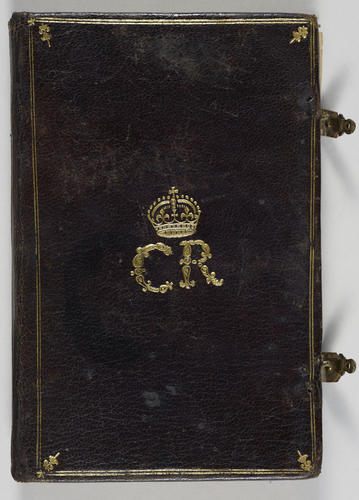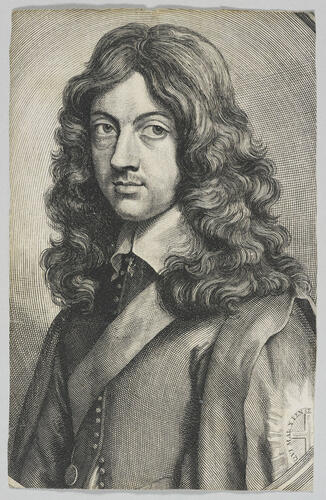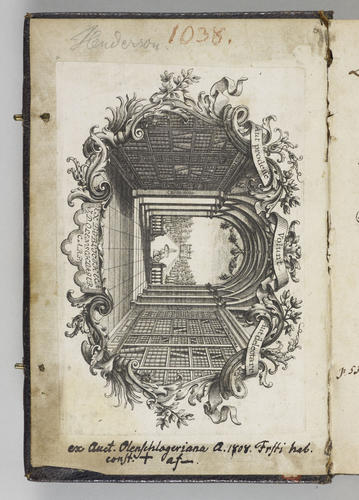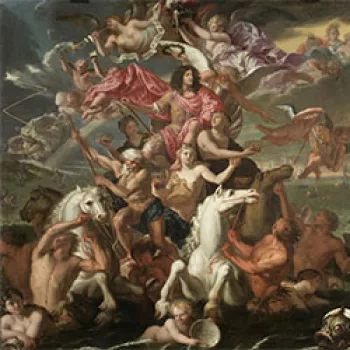Eikon Basilike 1648-49
16.8 x 11.0 x 2.5 cm (book measurement (conservation)) | RCIN 1047164

Attributed to Charles I, King of Great Britain (1600-49)
The Papers which passed at New-Castle betwixt His Sacred Majestie and Mr. Alex. Henderson, concerning the change of Church-government. Eikon basilike : the pourtraicture of His Sacred Majestie in his 1648-49

Attributed to Charles I, King of Great Britain (1600-49)
The Papers which passed at New-Castle betwixt His Sacred Majestie and Mr. Alex. Henderson, concerning the change of Church-government. Eikon basilike : the pourtraicture of His Sacred Majestie in his 1648-49

Attributed to Charles I, King of Great Britain (1600-49)
The Papers which passed at New-Castle betwixt His Sacred Majestie and Mr. Alex. Henderson, concerning the change of Church-government. Eikon basilike : the pourtraicture of His Sacred Majestie in his 1648-49

Attributed to Charles I, King of Great Britain (1600-49)
The Papers which passed at New-Castle betwixt His Sacred Majestie and Mr. Alex. Henderson, concerning the change of Church-government. Eikon basilike : the pourtraicture of His Sacred Majestie in his 1648-49

Attributed to Charles I, King of Great Britain (1600-49)
Master: The Papers which passed at New-Castle betwixt His Sacred Majestie and Mr. Alex. Henderson, concerning the change of Church-government. Eikon basilike : the pourtraicture of His Sacred Majestie in his solitudes and sufferings . . . . A Perfect copie of prayers used by His Majesty in the time of his sufferings, delivered to Doctor Juxon, Bishop of London, immediately before his death : also a copie of a letter from the Prince. Item: Print of Charles II with an inscription in his own hand on reverse 1648-49

Attributed to Charles I, King of Great Britain (1600-49)
Master: The Papers which passed at New-Castle betwixt His Sacred Majestie and Mr. Alex. Henderson, concerning the change of Church-government. Eikon basilike : the pourtraicture of His Sacred Majestie in his solitudes and sufferings . . . . A Perfect copie of prayers used by His Majesty in the time of his sufferings, delivered to Doctor Juxon, Bishop of London, immediately before his death : also a copie of a letter from the Prince. Item: Print of Charles II with an inscription in his own hand on reverse 1648-49







-
From 1641 Sophia (1630-1714), youngest daughter of Frederick V, Elector Palatine and his wife Elizabeth Stuart, daughter of James I, lived at her mother’s court in The Hague. There she met Charles, Prince of Wales, who, during his stay, became Charles II when his father Charles I was beheaded in January 1649. Charles was close in age to Sophia, and to many at the court a marriage between the two was desirable. Sophia initially welcomed the courtship, and wrote in her Memoirs ‘he and I had always been on the best of terms, as cousins and friends, and he had shown a liking for me with which I was much gratified’ (Memoirs p. 23). It was perhaps during this time that Charles gave a print of himself to Sophia: an etching by Frans van der Steen (c.1625-1672) after a painting of the new King done in Brussels in 1649 by Jan van der Hoecke (1611-51). On the back is written, in what appears to be Charles’s handwriting, ‘for the princes Sophia’. The print has been cut down to fit this copy of the Eikon Basilike, and was adhered next to the page on which the published image of Charles, Prince of Wales appears: ink doodling on this has off-set onto the back of the print.
The Eikon Basilike was seen as Charles I’s own account of his innocence, and it was instrumental in spreading the idea of him as a martyr. The authorship has been disputed, but it is now generally accepted that the King wrote much of the original material, which was then edited by Dr John Gauden. An anonymous annotation on the flyleaf discusses the dispute, noting that Charls I's second son, James II, did not believe his father to have been the author.
It cannot be proved that this copy of the Eikon Basilike belonged to Sophia, nor that the youthful doodling is in her hand. However, it seems probable that the print of Charles II with his note on the back is a remnant of his time with Sophia in The Hague: this would date the print earlier than the 1657-72 currently ascribed to it. In 1650 it became clear to Sophia that a marriage with Charles would not come about and she left The Hague for her elder brother’s court at Heidelberg, to avoid ‘the mortification of losing the esteem in which I was held’ (Memoirs p. 25). She married Ernst August of Brunswick-Lüneburg in 1658 and, following the Act of Settlement in 1701, was named heir to the English throne. She died in May 1714, two months before she would have been made Queen at the death of Queen Anne, and her son Georg Ludwig became King of Great Britain and Ireland as George I.
This copy of Eikon Basilike is bound together with The Papers which passed at New-Castle betwixt His Sacred Majestie and Mr. Alex. Henderson, concerning the change of Church-government and A Perfect copie of prayers used by His Majesty in the time of his sufferings, delivered to Doctor Juxon, Bishop of London, immediately before his death.Provenance
Possibly presented by Charles II, King of Great Britain to Princess Sophia of the Palatinate, later Electress of Hanover, in 1649-50. Contains the later bookplate of Johann Daniel von Olenschlager (1711-78).
-
Creator(s)
Attributed to (author)(publisher) -
Measurements
16.8 x 11.0 x 2.5 cm (book measurement (conservation))
17.0 x 2.5 cm (book measurement (inventory))
Alternative title(s)
The Papers which passed at New-Castle betwixt His Sacred Majestie and Mr. Alex. Henderson, concerning the change of Church-government. Eikon basilike : the pourtraicture of His Sacred Majestie in his solitudes and sufferings .... A Perfect copie of prayers used by His Majesty in the time of his sufferings, delivered to Doctor Juxon, Bishop of London, immediately before his death : also a copie of a letter from the Prince.








